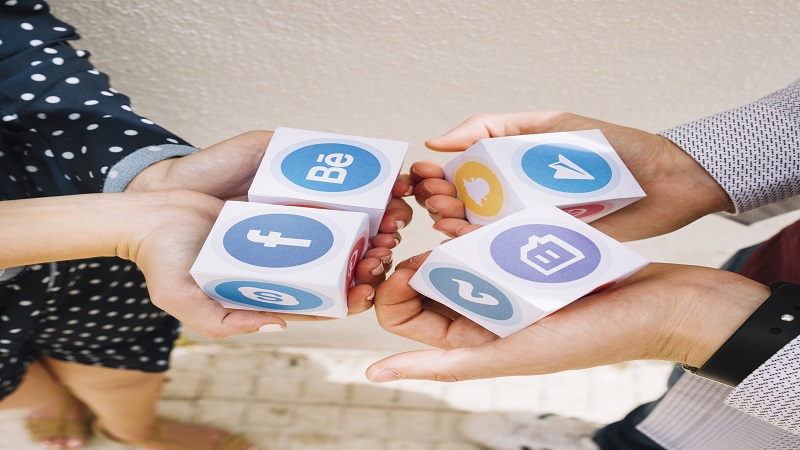Social media platforms have revolutionized how we connect, share, and consume information. One key feature that defines these platforms is the scrollable part. This feature allows users to continuously scroll through content, providing an endless stream of posts, images, and videos. In this article, we will explore the significance, functionality, and impact of the scrollable part of social media.
The Evolution of Scrolling on Social Media
Scrolling has become an integral part of the social media experience. Early social media sites used pagination, requiring users to click through pages. However, as technology advanced, platforms adopted infinite scrolling. This change enhanced user engagement by making content consumption seamless. Users now experience a fluid transition from one piece of content to the next, increasing their time spent on these platforms.
Functionality of Scrollable Content
The scrollable part of social media is designed to keep users engaged. Platforms like Facebook, Instagram, and Twitter implement algorithms that prioritize content based on user preferences. As users scroll, they encounter a mix of posts from friends, influencers, and advertisers. This personalized feed ensures that users are constantly exposed to content that interests them, encouraging prolonged use.
Impact on User Behavior
The infinite scroll feature significantly impacts user behavior. Studies show that users are more likely to spend extended periods on social media platforms with infinite scrolling. This design choice taps into the human desire for novelty and discovery. As users scroll, they encounter new content, creating a sense of anticipation and curiosity. This effect can lead to excessive screen time, affecting productivity and mental health.
Benefits of Scrollable Social Media Content
The scrollable part of social media offers several benefits. For users, it provides a continuous flow of information, making it easy to stay updated. For content creators, it increases the visibility of their posts. Infinite scrolling also benefits advertisers, as it maximizes the chances of their ads being seen. Overall, this feature enhances the user experience by making content discovery effortless.
Challenges and Criticisms
Despite its benefits, the scrollable part of social media has faced criticism. One major concern is the potential for addiction. The endless stream of content can lead to compulsive scrolling, negatively impacting mental health. Additionally, the constant exposure to curated content can create unrealistic expectations and foster a sense of inadequacy. Critics argue that platforms should implement features to promote healthier usage patterns.
How Social Media Platforms Utilize Scrolling
Different social media platforms have unique approaches to infinite scrolling. Instagram uses it to display a mix of photos, videos, and stories, keeping users engaged with diverse content. Twitter’s scrollable feed highlights tweets based on relevance and popularity. Facebook combines personal updates with trending topics, ensuring users always find something interesting. These strategies highlight the versatility of the scrollable feature.
Enhancing User Experience with Scrollable Content
To enhance user experience, social media platforms continuously refine their scrolling algorithms. They analyze user interactions to deliver more relevant content. Some platforms also offer features like pause options and reminders to take breaks, addressing concerns about excessive use. By balancing engagement with user well-being, platforms aim to create a more positive social media environment.
Future Trends in Social Media Scrolling
The future of social media scrolling is likely to see more innovation. Augmented reality (AR) and virtual reality (VR) could introduce new dimensions to scrolling, making it more immersive. Additionally, advancements in artificial intelligence (AI) will further personalize the content users see. As technology evolves, the scrollable part of social media will continue to play a crucial role in user engagement.
Frequently Asked Questions (FAQs)
What is the scrollable part of social media?
The scrollable part of social media refers to the feature that allows users to continuously scroll through an endless stream of content. This includes posts, images, videos, and advertisements, seamlessly delivered as users move down the page.
How does infinite scrolling impact user engagement?
Infinite scrolling significantly boosts user engagement by providing a continuous flow of content. This seamless experience keeps users on the platform longer as they anticipate discovering new and interesting posts with each scroll.
What are the benefits of infinite scrolling on social media?
The benefits include increased user engagement, enhanced content visibility for creators, and better ad exposure for advertisers. It also provides users with an effortless way to discover and consume content, keeping them updated and entertained.
Are there any drawbacks to infinite scrolling?
Yes, the primary drawback is the potential for addiction. The endless stream of content can lead to excessive screen time, impacting productivity and mental health. It can also create unrealistic expectations due to the constant exposure to curated content.
How do social media platforms use scrolling to personalize content?
Platforms analyze user interactions, such as likes, shares, and comments, to tailor the content displayed during scrolling. Algorithms prioritize posts based on user preferences, ensuring that the feed remains relevant and engaging.
What measures can users take to manage their scrolling habits?
Users can manage their scrolling habits by setting time limits, using features like pause options, and taking regular breaks. Some platforms also offer reminders to take breaks, promoting healthier usage patterns.
How might future technologies affect social media scrolling?
Future technologies like augmented reality (AR), virtual reality (VR), and advanced artificial intelligence (AI) could make scrolling more immersive and personalized. These innovations will likely enhance user engagement by delivering even more tailored and interactive content.
Can infinite scrolling affect mental health?
Yes, excessive use of infinite scrolling can lead to negative mental health effects, such as anxiety and depression. The constant exposure to idealized content can foster feelings of inadequacy and reduce self-esteem.
How do different platforms implement infinite scrolling?
Different platforms use unique approaches: Instagram combines photos, videos, and stories; Twitter focuses on tweets’ relevance and popularity; and Facebook mixes personal updates with trending topics. Each platform tailors the scrolling experience to keep users engaged with diverse content.
What steps are platforms taking to address the negative impacts of infinite scrolling?
To address negative impacts, platforms are refining their algorithms to balance engagement with user well-being. They are also introducing features like reminders to take breaks and pause options, promoting healthier and more mindful social media usage.
Conclusion
The scrollable part of social media has transformed how we interact with digital content. It offers numerous benefits, from increased engagement to better content discovery. However, it also presents challenges that need to be addressed. By understanding its significance and impact, users and platforms can work together to create a more balanced and enriching social media experience. for more interesting information click here













